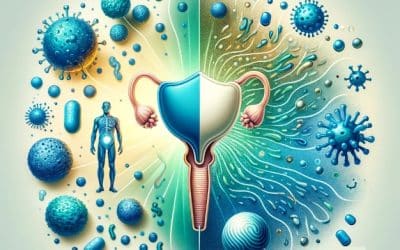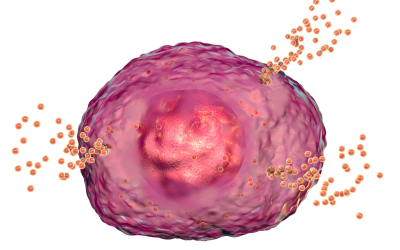Aging is a complex and dynamic process characterized by continuous biological remodeling (Minciullo et al., 2016). The main actors in this remodeling theory are DNA repair, apoptosis, immune response, oxidative stress and inflammation. “To reach extreme longevity, it is necessary for all these mechanisms to interact in an efficient way” (Minciullo et al., 2016).
In the process of aging, some researchers have termed the process in which adaptive immunity declines as immunosenescence. It is defined as the gradually adaptive net result of the process of the body fighting malignant damage. It is a dynamic process of optimization of the trade-off in immunity (Xia et al., 2016). Long-lived people, especially centenarians, seem to cope with chronic subclinical inflammation through an anti-inflammatory response, called therefore “anti-inflammaging” (Minciullo et al., 2016).
Immunosenescence has been considered as detrimental because it often leads to subclinical accumulation of proinflammatory factors and “inflammaging” (Xia et al., 2016). In the process of aging, some researchers pointed out that the phenomenon where adaptive immunity declines is called immunosenescence. A major contributor of inflammaging is the antigenic load of persistent infection which starts from intrauterine life and continues for an entire lifespan (Minciullo et al., 2016). During “inflammaging”, large quantities of pro-inflammatory cytokines are produced/released to repair damage at the tissue level (Minciullo et al., 2016). Chronic low-grade inflammation is damaging to the organism, particularly when it continues and moves to a non-resolving inflammation state (Xia et al., 2016).
Together, immunosenescence and inflammaging are suggested to stand at the origin of most of the diseases of the elderly, such as infections, cancer, autoimmune disorders, and chronic inflammatory diseases (Fulop et al., 2017).
According to Fulop et. al, heightened inflamm-aging is produced as a consequence of:
- Dysfunctional mitochondria
- Defective autophagy/mitophagy
- ER stress
- Activation of inflammasome by cell debris and misplaced self-molecules
- Misfolded or oxidized proteins
- Activation of DNA damage response
- Senescent T cells
- Age related changes in gut microbiota.
There are alterations in the adaptive immune response that occurs during aging. This includes a decrease in naïve T cells and an increase in memory T cells that is primed by different causes. One of the most basic changes in the adaptive immune system is reduction in new naïve cells due to thymic involution and acute, chronic antigenic stress over time, and hematopoietic stem cell insufficiency (Fulop et al., 2017). There is also an increase in the number of memory CD8+ T cells, which are characterized by the loss of naïve T cell surface markers (such as CD28, CD27) and the emergence of new senescent markers.
The alterations in these particular T cells has been considered the main explanation for increased incidence of infections and cancers in the elderly (Fulop et al., 2017). In addition, B cell immunosenescence induces alterations starting from the generation during hematopoiesis to the reduction of cell diversity and lower antibody specificity (Costantini, D’Angelo, & Reale, 2018). This in part explains the increased susceptibility of the elderly to infectious diseases and reducing the protective effects of vaccination (Costantini et al., 2018).
Interestingly, infection by Cytomegalovirus (CMV) has emerged as the largest potential stimulating agent involved. The Treg population also increases with aging as well as the pro-inflammatory Th17 subpopulation. The consequences of these overall changes result in the decreased ability to fight new challenges. Clonal expansion, cytokine production, and specific antibody production are compromised. It appears that both aged monocytes and macrophages contribute to chronic inflammation and reduced level of cytokines, and subsequent immune dysfunction. In fact, Franceschi et al. proposed macrophages as key cells in the induction and maintenance of inflamm-aging and have defined “macroph-aging” as the chronic macrophage activation that characterizes aging (Costantini et al., 2018).
Another area of interest is the association of microbial dysbiosis, intestinal permeability, systemic inflammation and macrophage dysfunction (Thevaranjan et al., 2017). In 1907, Elie Metchnikoff proposed that tissue destruction and senescence were consequences of chronic systemic inflammation, which occurred as a result of increased permeability in the colon and the escape of bacteria and their products. It is theorized that bacterial translocation and subsequent inflammation are a driver of intestinal permeability rather than a consequence of intestinal damage. The overgrowth of gut microbes and bacterial by-products is thought to result in systemic translocation, increase in inflammation, and endothelial damage. Interestingly, members of the Clostridia species were mainly implicated in this pathogenicity.








